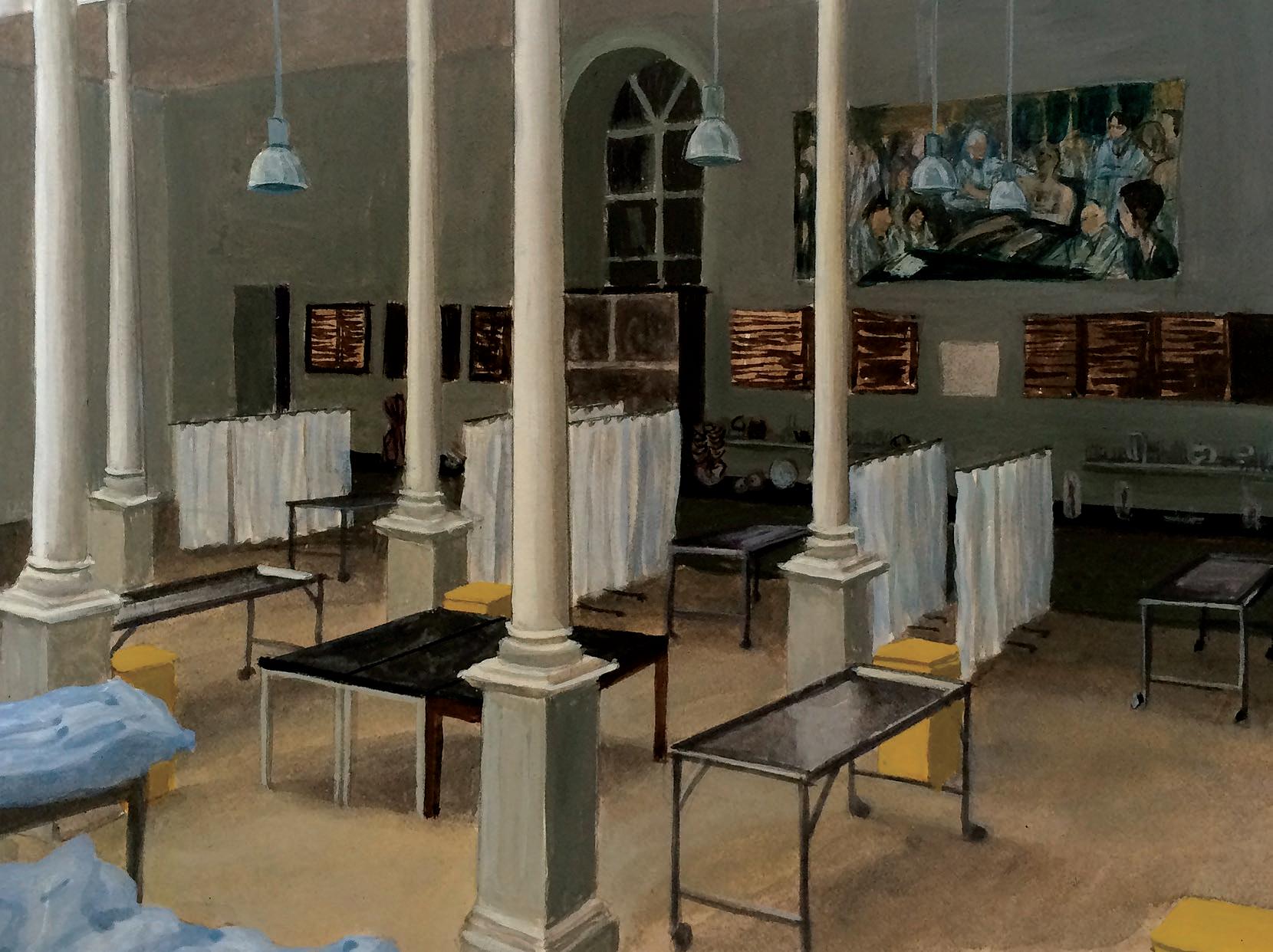A place of gifts
The Anatomy Room Gallery, RCSI
The Royal College of Surgeons in Ireland, RCSI, was founded in 1784. Its first Professor of Anatomy, John Halahan, was appointed the following year and teaching began in rented accommodation behind Mercer’s Hospital in 1789. Our elegant new College building on St Stephen’s Green opened in 1810 and two years later, Abraham Colles was teaching in what is now the south aisle of the Anatomy Room. Two further top-lit aisles were added to the north in 1891-2.
Anatomy is central to the training of physicians and surgeons. Initially anatomical dissection was viewed as an added punishment for those who had been executed. Bodies were supplied unwillingly and theft from graveyards was common. In the wake of murders in Edinburgh committed by William Burke and William Hare, however, the Crown was forced to intervene. The Anatomy Act of 1832 regulated the practice of anatomy by licenced teachers provided that no relative objected. This began the principle of donating one’s remains for anatomy teaching and, following an initiative by Irish anatomists, voluntary donation for medical teaching and research has been our practice since the early 1960s.
Each year at the start of the autumn term, our White Coat Ceremony reminds the new medical, physiotherapy and pharmacy students that members of the Irish public have donated their bodies so that they may learn from them. They are their first teachers. They are also their first patients, so the students must behave professionally. The outcome of such a gift may be uncertain at the time of giving, but the fact that it has been freely given charges it with great potential. This selfless act has the power to transform and inspire our students and graduates as they treat patients throughout their careers all over the world.
Art and anatomy have a common heritage in the Renaissance. Leonardo da Vinci planned an anatomy book, as is evident from his notebooks in the Royal Collection at Windsor. Andreas Vesalius published his book The Fabric of the Human Body in 1543, illustrated with woodcuts from the studio of Titian. Anatomy was studied in art academies and many, including the Royal Academy (1768), the Royal Hibernian Academy (1823) and the Royal Scottish Academy (1826), appointed Professors of Anatomy. These appointments tend to be ‘at zero salary and for life’, which explains why the RHA has had 10 professors in 194 years, while RCSI has had 29 in its 233 year history. Only two professors have held both posts simultaneously, Sir William Thornley Stoker, brother of Bram, from 1876 to 1889, and the author, since 2007.
In 2008, our Dean, Prof Cathal Kelly, was approached by the artist Robert Jackson who was interested in painting the Anatomy Room. This was supported by our Registrar, Mr Michael Horgan, and I went to meet Robert in Edinburgh. The result was the first, and largest, painting in our catalogue, The Anatomy Lesson of the Irish College of Surgeons, which was unveiled by Mick O’Dea RHA in March 2010. Robert had visited us during the summer exams in 2008, and again during teaching term later that year, to sketch and take photographs. The 4 x 2 m canvas was painted over a period of 11 months in the small village of Strathkinness in Fife, Scotland, and depicts 47 staff and
students in the Anatomy Room. Most anatomy lesson paintings show medics around a cadaver, but this one has them grouped around a surface anatomy model to emphasise the importance of living anatomy and to reference the free, on-line teaching programme which we developed with Mick, Una Sealy RHA and Anil Kokaram. The surface model, Oran Kennedy, was a PhD student at the time and, following a Fulbright Scholarship to New York, is now a lecturer in the Anatomy Department. In Rembrandt’s The Anatomy Lesson of Dr Nicolaes Tulp (1632), there is an anatomical error, as the forearm flexor muscles take origin from the lateral epicondyle of the humerus. In Jackson’s painting, Dr Faraz Khan is shown dissecting a forearm with the flexors arising from the anatomically correct medial epicondyle. Robert’s attention to detail is remarkable, notably the X rays, floor tiles, reflections, honours boards with the names of previous Professors of Anatomy clearly legible, and the watch and clock faces where the time is set at 3 minutes to 12, the time when he finished painting.
The Anatomy Lesson was chosen to hang in the 2010 RHA Annual Exhibition and generated considerable interest. I subsequently contacted members of the RHA and asked them to send me drawings they had undertaken in our Anatomy Room when they were art students. This led to donations from Richard Gorman RHA, Mick O’Dea RHA and Robert McColgan. Camille Souter HRHA had worked in the Anatomy Room in the 1980s and donated a drawing from that period, as did Ken Donfield from NCAD, while Katherine Nixon presented us with her lead glass sculpture of the brain Through a Glass Darkly. This inspired the RCSI Art Society to run an annual anatomical drawing competition with the winning entry framed and hung in the Anatomy Room. Winners to date include medical students Joan Noelker, Catherine Tam, Edmond Li, Fei Lim Poh, Malika Gill, Jieling Lee, Ali Hazari, Aisha Nafha Saleem and Samah Ahmed and physiotherapy student Chris Clarke, reflecting the diversity of our student population.
Our staff joined in as well, with Michael Earley FRCSI donating works he had undertaken as a student, trainee and consultant surgeon – ‘the early, middle and late Earleys’, and Alec Blayney FRCSI giving us two works inscribed and presented to him by a grateful patient, the artist Micheal Farrell. Discussions with acrylic artist Avril Hutch led to Purkinje, five pieces which form the centrepiece of each of our north-facing windows and change with the light giving a kaleidoscope of colour. Artists including Daniel Flower, Francis O’Toole, Elizabeth Cope, Chanelle Walshe, Zsolt Basti, Michelle Fahy, Joanne Boyle, Melissa O’Faherty and Eithne Jordan RHA have approached me to request access to the Anatomy Room to draw and paint and they have donated works to our collection. Freddie Wood FRCSI provided an annotated sketch of a cardiac anomaly, which was also painted in watercolour and pen by artist Chanelle Walshe, to give an interesting anatomist/artist diptych.
In 1916, RCSI was occupied by insurgents led by Michael Mallin and the RHA in Abbey Street was burnt to the ground. The centenary was commemorated in RCSI by an historical exhibition and in the RHA by Mick O’Dea’s installation The Foggy Dew, comprising portraits, history paintings, and mixed media sculptures. Nine of these sculptures, depicting falling figures, are hung from the rafters in the Anatomy Room. Their subject matter is appropriate, as many lost their lives in RCSI in Easter Week 1916, and their title, The Ever Present Dead, could not be more apposite. The common Georgian origins, 32 county educational roles and 1916 heritage of the RCSI and RHA led to the establishment of the RCSI Art Award, in association with The Irish Times, to recognise the connection between art and healing.
Patrick Scott HRHA died on 14th February, 2014 and his death notice in The Irish Times noted that he had donated his body to RCSI. This was his first gift to us. His second, Untitled from Meditations, was made in 2017 by Eric Pearce who chose where it will hang in the Anatomy Room. Imogen Stuart RHA has also chosen where her carving
Menetekel is sited on the west wall of the Anatomy Room, with the condition that, should it be moved, it must be returned to her family. In the 1970s, a storm had brought down a branch of a cedar in the garden of RCSI President, Frank Duff, and he presented the wood to Imogen. Imogen left the marks where it was torn off the trunk and carved an upper limb and the word ‘Menetekel’ on the extensor surface of the forearm to remind us that our days are numbered. The fingers are in the gesture of benediction – an ulnar nerve palsy at the wrist.
To this collection of recently donated works, we can add a painting of John Houston, who introduced the microscope to Irish pathology and described the rectal valves; two portraits of Tom Garry, the original Surgeon Prosector, by Harry Kernoff RHA, and plaster busts of Stromeyer, the orthopaedic surgeon, and James Cusack, three times President of RCSI. Photographs, an etching and a student collage from the 1990s, the coat of arms of the Anatomical Society and two abstracts, one given by the Association of Norwegian Students Abroad to commemorate the bicentenary of the College in 1984, complete this catalogue of art works.
In 1834, John Houston described the 44 wax models of our Northumberland Museum. Mainly by Jacques Talrich, they are housed in glass cases in the windows of the south wall of the Anatomy Room and were catalogued in 1992. They too are the result of a donation, in this case by Hugh Percy, 3rd Duke of Northumberland, who had visited the College in 1829. His Secretary wrote that ‘The Lord Lieutenant being impressed with a very favourable opinion of the liberality with which the Royal College of Surgeons in Dublin has been established and conducted, is anxious to make some addition to their museum as a lasting testimonial of his approbation and esteem’.
Perhaps every gift indicates ‘approbation and esteem’. Lewis Hyde has written that a gift ‘speaks commandingly to the soul and irresistibly moves us’. That this has occurred with those who have donated their bodies for medical teaching and research is irrefutable. But when the students, trainees and teachers look up from their labours in the Anatomy Room, they can now see gifts of drawings, paintings and sculptures that inspire and help them realise that, while medicine makes life possible, art makes it worthwhile.
To all our donors, we owe our sincere gratitude.
Clive Lee FRCSI, HRHA Professor of Anatomy RCSI & RHA
2009
Commissioned by Cathal Kelly & Michael Horgan

6
RCSI Anatomy Room Gallery
01. Robert Jackson
The Anatomy Lesson of the Irish College of Surgeons
Oil on canvas, 400 x 190

7 RCSI Anatomy Room
Gallery
01a. Robert Jackson
Key to the Anatomy Lesson Pencil on paper, 76.5 x 61
2009

8
RCSI Anatomy Room Gallery
02. Michael Earley FRCSI
Craniofacial Exposure
Oil on canvas, 44 x 33.5 2009

9
RCSI Anatomy Room Gallery
03. Michael Earley FRCSI Conversation / Conversion Acrylic on hardboard, 94 x 69 1979

10
RCSI Anatomy Room Gallery
04. Michael Earley MB
Embryo
Gouache on paper, 51 x 76 1974

11
RCSI Anatomy Room Gallery
1978
05. Richard Gorman RHA Skeletal Elements I Ink on paper, 46.5 x 55.3

12
RCSI Anatomy Room Gallery
1978
06. Richard Gorman RHA Skeletal Elements II Ink on paper, 46.4 x 55.5

13 RCSI Anatomy Room Gallery
07. Joan Noelker Final Med
Anterior and Posterior Triangles of the Neck Pencil on paper, 45.5 x 59 2010
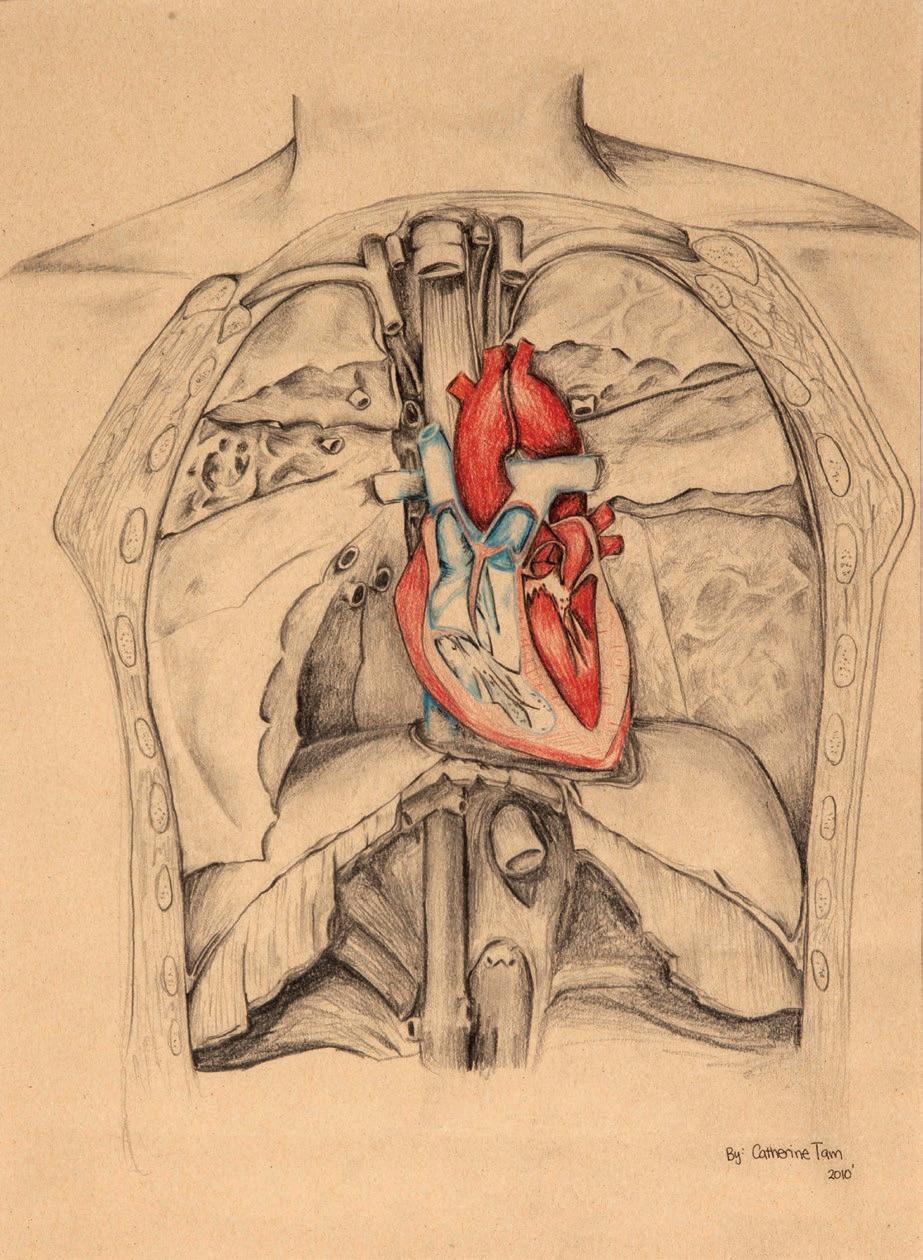
14 RCSI Anatomy
Room Gallery
08. Catherine Tam 2nd Med
The Thoracic Cavity
Pencil on paper, 49 x 60 2010

15 RCSI Anatomy
Room Gallery
09. Robert Mc Colgan ANCAD, ATC, CDE
Anatomical Studies 1, 2 & 3
Mixed media on sugar paper, 82 x 48.5 1966

16 RCSI
Anatomy Room Gallery
10. Catherine Tam 3rd Med The Human Brain
Pencil on paper, 49 x 58.5 2011

17
RCSI Anatomy Room Gallery
2011
11. Edmond Li 1st Med Muscles of the Body Pencil on paper, 38.8 x 48

18
RCSI Anatomy Room Gallery
12. Mick O’Dea RHA Dissecting Room Study
1978
Pencil & watercolour on paper, 53.5 x 49.2

19
RCSI Anatomy Room Gallery
13. Fei Lim Poh 2nd Med
The Cranial Nerves and Brachial Plexus Pencil on paper, 47.6 x 60 2012

20 RCSI
Anatomy Room Gallery
14. Chris Clarke Final Physiotherapy Angelo Black biro on cardboard, 45.2 x 55 2012

21
RCSI Anatomy Room Gallery
1984
15. Ken Donfield NCAD In the College of Surgeons Pastel on paper, 72.5 x 57.2

22
RCSI Anatomy Room Gallery
16. Daniel Flower
Fragmented Skull
Acrylic on canvas, 55 x 75 2013

23 RCSI
Anatomy Room Gallery
17. Camille Souter HRHA Study for Cadaver Pencil on paper, 47.8 x 39 c1984

24
RCSI Anatomy Room Gallery
18. Malika Gill 1st Med
Michaelangelo: Muscles of the Back Pencil on paper, 58.5 x 77.5
2013

25
RCSI Anatomy Room Gallery
2013
19. Jieling Lee 1st Med The Pulmonary System Pencil on paper, 77.5 x 58.5

26 RCSI
Anatomy Room Gallery
2011
20. Francis O’Toole Écorché male Pencil on Paper, 36.6 x 46.8

27
RCSI Anatomy Room Gallery
21. Elizabeth Cope
Cadaver, dorsal
Watercolour, pencil & charcoal on paper, 104.2 x 80 2013

28
RCSI Anatomy Room Gallery
22. Elizabeth Cope
Group Portrait
Watercolour, pencil & charcoal on paper, 104.2 x 80 2013

29 RCSI Anatomy Room Gallery
23. Ali Hazari 2nd Med Behind the Seams
Coloured pencil on paper, 39 x 43.5 2014

30
RCSI Anatomy Room Gallery
24. Michael Earley MB
Sphenoid
Gouache on board, 81.1 x 69.2 1977

31
RCSI Anatomy Room Gallery
25. Chanelle Walshe Heart Study at RCSI
2015
Watercolour & pen on paper, 36 x 46.8
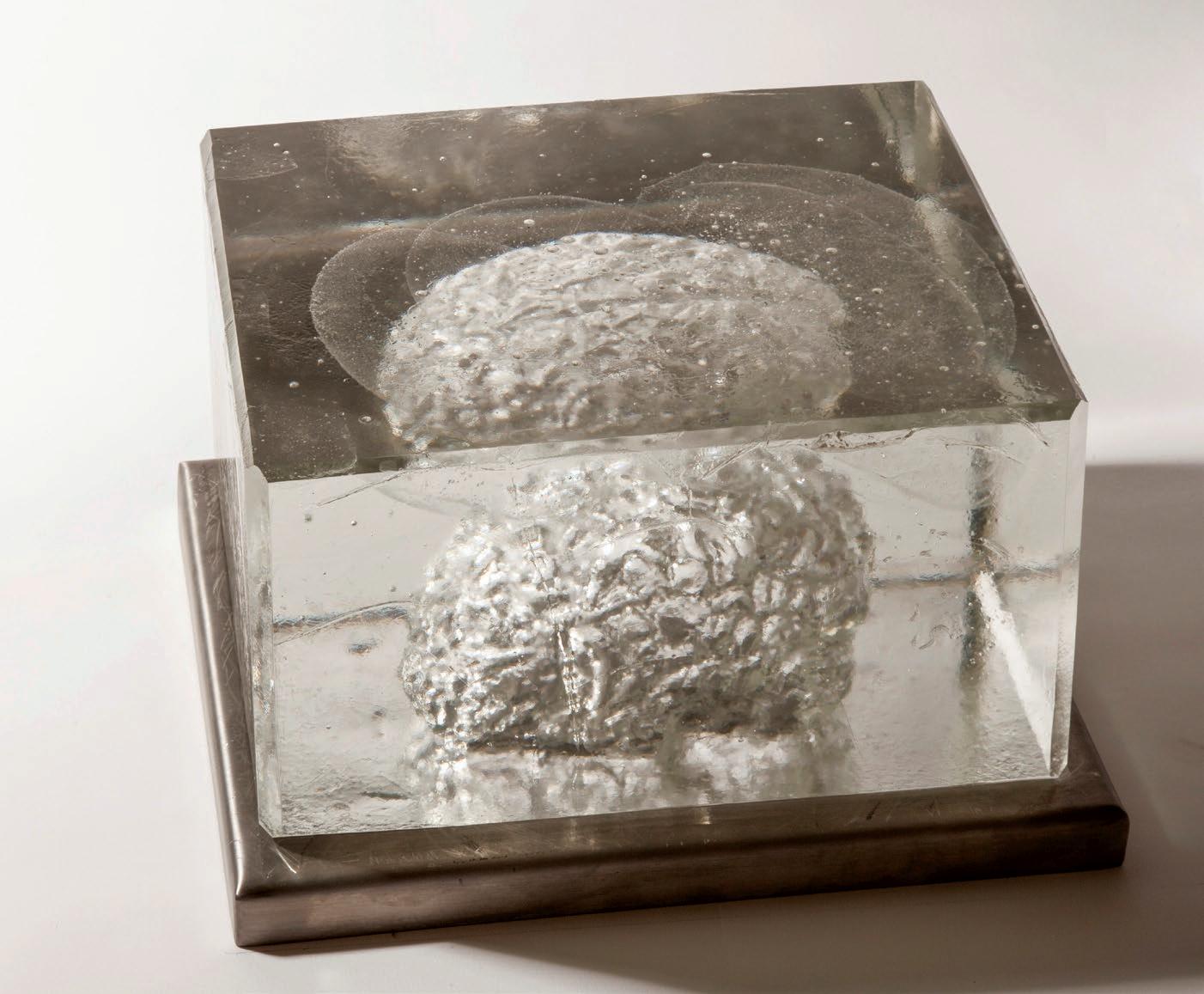
32
RCSI Anatomy Room Gallery
26. Katherine Nixon Through a Glass Darkly Cast lead glass on stainless steel plinth, 16 x 28 x 25 2006
27. Mick O’Dea RHA
The Ever Present Dead
Mixed media, 9 pieces, dimensions variable

2015
On loan from the artist
33
RCSI Anatomy Room Gallery

34
RCSI Anatomy Room Gallery
28. Zsolt Basti IADT Lateral leg
Pencil on paper, 35.8 x 42.4 2016

35
RCSI Anatomy Room Gallery
2017
29. Aisha Nafha Saleem 1st Med Beneath you’re beautiful Oil on canvas, 34 x 43.9

36 RCSI
Anatomy Room Gallery
30. Samah Ahmed 1st Med X-limits Pencil on paper, 36.3 x 36.3 2017

37
RCSI Anatomy Room Gallery
31a. Avril Hutch PhD
Purkinje
Acrylic on polycarbonate, 5 pieces, 87 x 102 2017

38
RCSI Anatomy Room Gallery
31b. Avril Hutch PhD
Purkinje
Acrylic on polycarbonate, 5 pieces, 87 x 102 2017

39 RCSI
Anatomy Room Gallery
31c. Avril Hutch PhD
Purkinje
Acrylic on polycarbonate, 5 pieces, 87 x 102 2017

40
RCSI Anatomy Room Gallery
31d. Avril Hutch PhD
Purkinje
Acrylic on polycarbonate, 5 pieces, 87 x 102 2017

41
RCSI Anatomy Room Gallery
31e. Avril Hutch PhD
Purkinje
Acrylic on polycarbonate, 5 pieces, 87 x 102 2017

42 RCSI Anatomy Room Gallery
32. Michelle Fahy NCAD
Study of knee joint
Water soluble pencil on paper, 54 x 40 2016
Untitled from Meditations

Carborundum embossed with gold leaf, 20/50, 78.5 x 78.5 2007
Presented by Eric Pearce, 2017
43 RCSI
Anatomy Room Gallery
33. Patrick Scott HRHA
Menetekel
Cedarwood on copper, 100.5 x 83.5
c1979
This relic signifies: Blessing-Teaching-Judging-Warning. It is the gesture of the Pantocrator. It is also the position of the hand following an ulnar nerve injury at the wrist. The arm was carved by Imogen Stuart RHA out of a branch of cedarwood from the garden of a former President of RCSI, Mr Frank Duff. The marks where it was torn off the tree trunk by a storm can still be seen. The back of the arm reflects the carved letters Menetekel*, which emerge from under the bark. The arm stands for the western world, for its art, its tradition and culture. HUMANITAS. Everything in our time or era is as beautiful as always, but all of it is a fragment.
*Menetekel - God has numbered your days. You have been weighed on the scales and found wanting. Daniel 5,1-30.

44 RCSI Anatomy Room Gallery
34. Imogen Stuart RHA
Not pictured, gilt on wood inscription:
THOMAS PETER GARRY, 1885-1963
Tom Garry for more than half a century dedicated his whole existence to Anatomy in the RCSI. His invisible memorial was written long ago in the hearts of the generations of pupils who carried his unique aphorisms to every quarter of the globe, and in the legends of Dublin medicine – Ave atque Vale!

45 RCSI Anatomy
Room Gallery
35. Harry Kernoff RHA
Portrait of Tom Garry Oil on canvas, 33 x 36 c1957



46 RCSI Anatomy Room Gallery
36. Tom Garry Memorabilia Biography, photograph & Carmichael Medal by J. Woodhouse ARHA 29 x 65
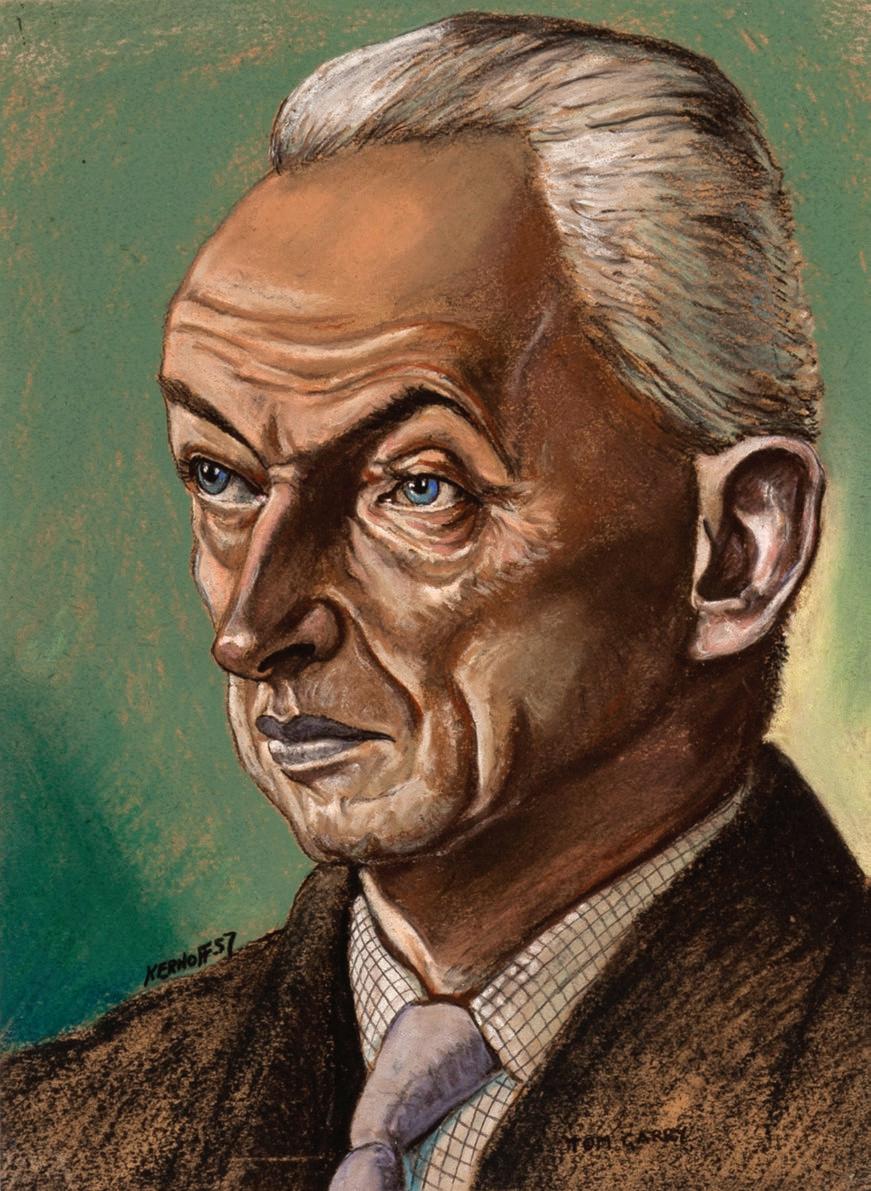
47
RCSI Anatomy Room Gallery
37. Harry Kernoff RHA
Portrait of Tom Garry
Pastel on paper, 53 x 63.5 1957
Not pictured, brass inscription: Harold Browne MCh, MSc, DA, FRCSO, FACS Surgeon Prosector
In 2007, this lecture theatre was named in honour of Harold who, with wit and wisdom, has taught clinical anatomy here since 1953.
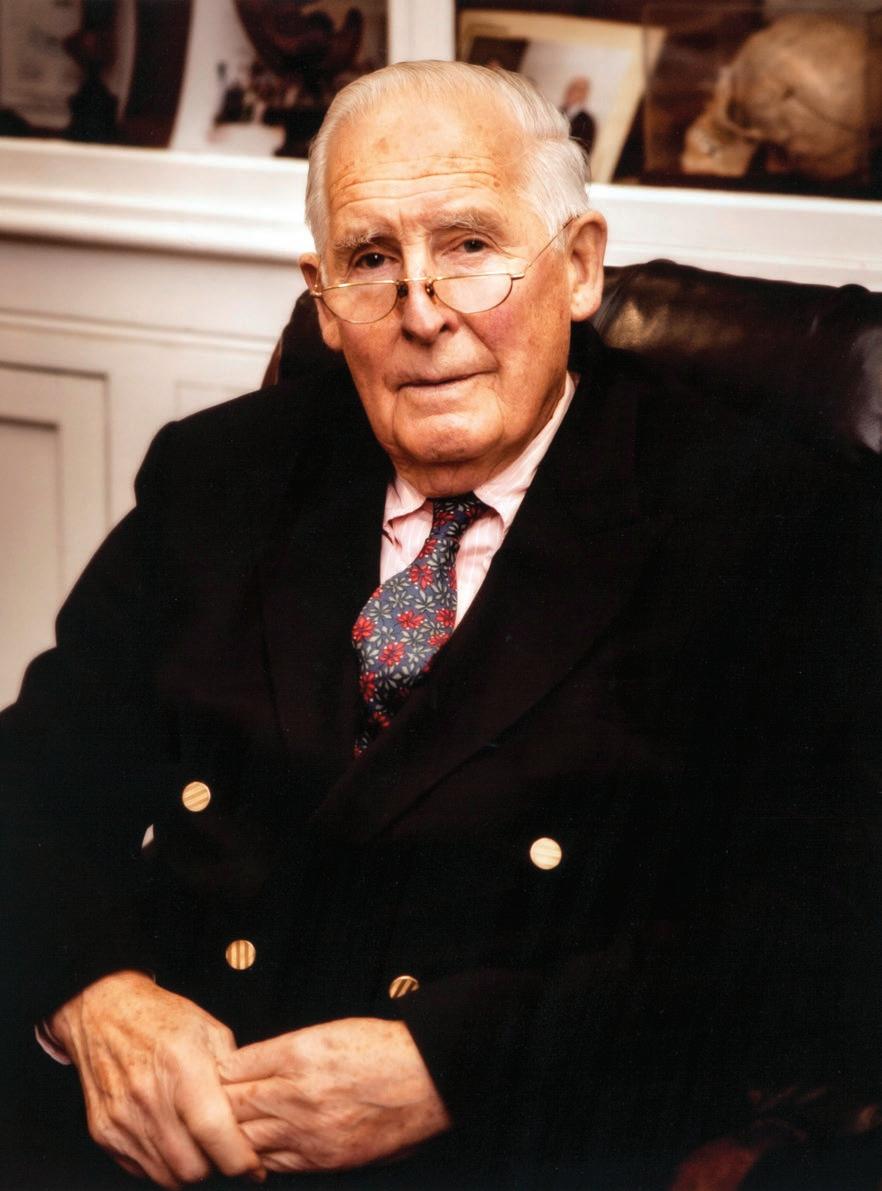
48
RCSI Anatomy Room Gallery
38. Pat Nolan
Portrait of Harold Browne
Colour photograph, 63 x 73 2007

49
RCSI Anatomy Room Gallery
39. W. Engelhard
Bust of George Friedrich Louis Stromeyer Plaster, 58 cm 1876

50
RCSI Anatomy Room Gallery
40. John Lawlor
Bust of James William Cusack PRCSI Plaster, 72 cm 1855
41. Gérard de Lairesse
Plate 87 from Anatomia humani corporis demonstrata veterum recentiorum inventis explicata plurumisque, hactenus non detectis, illustrata 105 tabulis by Godfrey Bidloo
Photographic reproduction on paper, 81.5 x 118 1685

51 RCSI
Anatomy Room Gallery

52
RCSI Anatomy Room Gallery
42. Gemma Seery Appearances can be misleading Etching, 53.5 x 71
1997
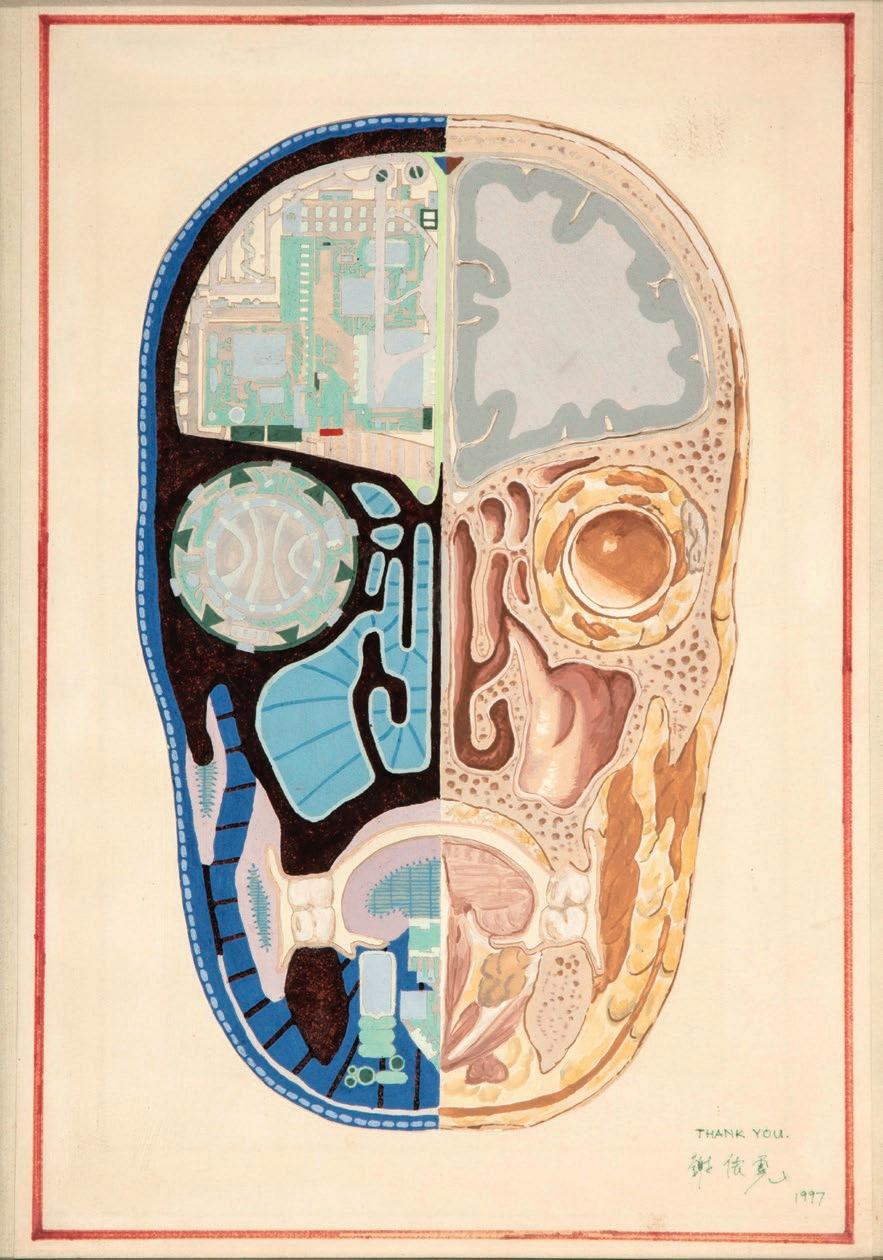
53 RCSI Anatomy
Room Gallery
43. Malaysian medical student Coronal section of skull Gouache and collage, 30.4 x 45
1997

54
RCSI Anatomy Room Gallery
44. MK Skull in glass
1999
Black & white photograph, 44.2 x 32

55
RCSI Anatomy Room Gallery
45. MK Apple in skeletal hand
1999
Black & white photograph, 44.2 x 32
Abstract
Mixed media, 121 x 182

Mid C20th
Presented by Professor & Mrs Clive Lee
56
RCSI Anatomy Room Gallery
46. Pamela Matthews
1982
Presented to RCSI in the Bicentenary year by the Association of Norwegian Students Abroad, May 17th 1984

57
RCSI Anatomy Room Gallery
47. Knut Rumohr
Voss
Oil on canvas, 66.5 x 51

58 RCSI
Anatomy Room Gallery
48. Jacques Talrich
Wax model of the lymphatics of the head & neck
Colour photograph, 32.6 x 37.6
c1831
Photographed by Pat Nolan

59
RCSI Anatomy Room Gallery
49. Artist Unknown Portrait of John Houston Oil on canvas, 87 x 100

60
RCSI Anatomy Room Gallery
2013
50. Robert Parsons MBE Coat of Arms of the Anatomical Society Scan & colour print, 38.8 x 38.8
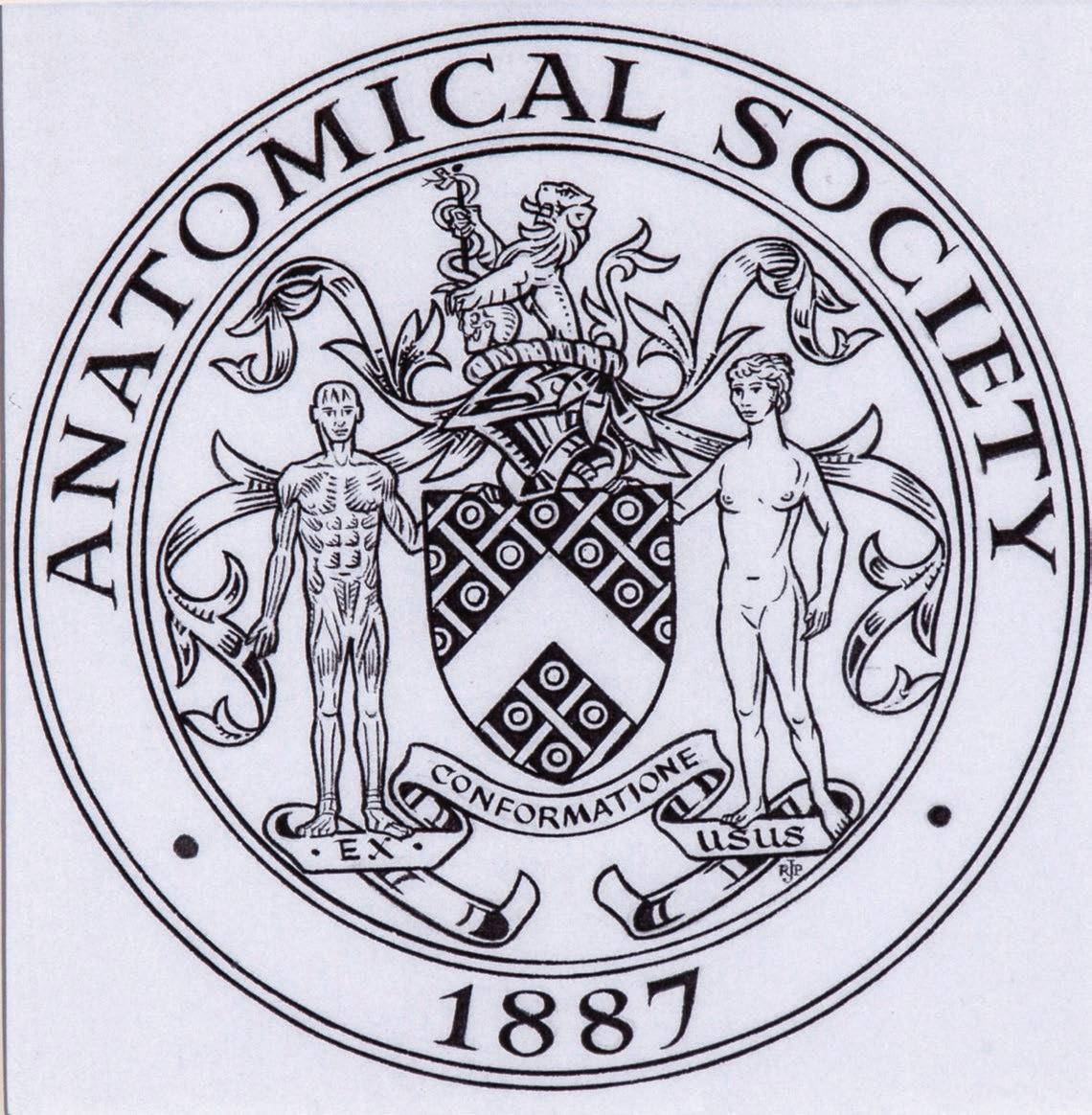
61
RCSI Anatomy Room Gallery
2013
51. Robert Parsons MBE Seal of the Anatomical Society Scan & colour print, 38.8 x 38.8
1989
Inscribed by the artist: Est pour Mr Blaney (Doctor) Merci mille fois pour tous. M.F. Cardet Gard

62 RCSI Anatomy
Room Gallery
52. Micheal Farrell
Sweeney vers sa mort Pencil & watercolour on paper, 87 x 65.2
Presented by Alec Blayney FRCSI

63
RCSI Anatomy Room Gallery
53. Micheal Farrell
Black 47 ‘Wounded Wonder’
Etching w/ aquatint & gold leaf, 28/35, 84 x 77.5
1997
Inscribed by the artist: Alex Blaney la vie d’Artiste ce pas de la Tarte n’est pas! Merci
Presented by Alec Blayney FRCSI


64 RCSI Anatomy Room Gallery
2017
54. Freddie Wood FRCSI, & Chanelle Walshe Diptych - Partial anomalous right pulmonary venous drainage Pencil & pen on paper, 54 x 41.5

65
RCSI Anatomy Room Gallery
55. Joanne Boyle Os coxae
Charcoal on paper, 70 x 49
2017

66
RCSI Anatomy Room Gallery
56. Melissa O’Faherty
A still life
White conté on black paper, 54 x 42 2017

67
RCSI Anatomy Room Gallery
57. Eithne Jordan RHA
Anatomy Room I
Acrylic & gouache on paper, 24 x 18 2017

68 RCSI
Anatomy Room Gallery
58. Nick Miller
Anatomy Drawing IV
1993
Lithographic crayon on paper, 42.5 x 40.5

69 RCSI
Anatomy Room Gallery
59. Nick Miller
Anatomy Drawing VII
1993
Lithographic crayon on paper, 47.5 x 52.5

70
RCSI Anatomy Room Gallery
60. Eithne Jordan RHA
Anatomy Room II
Acrylic & gouache on paper, 24 x 18 2017

71
RCSI Anatomy Room Gallery
61. Joseph Robinson Kirk RHA Bust of Dr Todd [?] Plaster, 70 1852

72
RCSI Anatomy Room Gallery
62. John Henry Foley RA, RHA
Maquette of Sir Dominic Corrigan Plaster, 99
1865
Presented by Sir Francis Cruise PRCPI

73
RCSI Anatomy Room Gallery
63. T. Stewart Kirk
1870
Bust of John Stannus Hughes Plaster, 70

74
RCSI Anatomy Room Gallery
64. T. Stewart Kirk Bust of Hans Irvine Plaster, 70 c1870

75
RCSI Anatomy Room Gallery
65. Gerald Brockhurst RA
Portrait of Oliver St John Gogarty HRHA
Oil on canvas, 55 x 75
c1939
Presented by Professor & Mrs Stacey Day
E Manibus Scientiae
Jesmonite and steel, 180

2019
E Manibus Scientiae (From the Hands of Knowledge) commemorates the passing on of knowledge and wisdom in the Anatomy Room and the artist’s father, Michael McCormack LRCP&SI, FRCSI, FRCSEd (1916-2004), who served as a Surgeon Prosector from 1982 to 2000
76
RCSI Anatomy Room Gallery
66. Catherine Greene

77 RCSI
Anatomy Room Gallery
67. Eoin Kelleher LRCP&SI Arterial System
2018
Pen & black felt tip on paper, 21 x 29.5

78
RCSI Anatomy Room Gallery
2019
68. Eoin Kelleher LRCP&SI Muscles of facial expression Black felt tip on paper, 21 x 29.5
Cork red limestone, Butler’s Grove limestone & brass on a Kilkenny limestone sub plinth, 33 x 70
2015
On loan from the artist

79
RCSI Anatomy Room Gallery
69. Jason Ellis
Breathe
Chaos L.A. V
Monotype on paper, 105 x 75 2016
Artist’s gift in memory of Dr. Gary David Silver LRCP&SI, Class of 1985

80
RCSI Anatomy Room Gallery
70. Jedd Novatt
Rules for Dissection

81 RCSI Anatomy Room Gallery
71. Auckland Campbell Geddes GCMG, KCB, PC, FRSE
Black print on paper, 39.5 x 62 1913

82
RCSI Anatomy Room Gallery
72. Albert Irvin RA
Tabernacle
Colour poster, 96 x 73.5 2011

83
RCSI Anatomy Room Gallery
73. W Holl, after Sir Joshua Reynolds RA John Hunter
Stipple engraving, 22.5 x 28
1786

84
RCSI Anatomy Room Gallery
74. Colin Martin RHA Study for Laboratory Gouache on paper, 47.5 x 39 2021

85
RCSI Anatomy Room Gallery
75 Cara Connolly FRCSI Forearm Flexors Colour print on paper, 26 x 51 202
0

86
RCSI Anatomy Room Gallery
76 Unknown artist
RCSI Coat of Arms, 1784-1907
Carved oak, 45 x 90

87 RCSI
Anatomy Room Gallery
77a Michael Earley FRCSI
3
Barber-Surgeons Guild Coat of Arms 1645 Black pen on paper, 39 x 39 202

88
RCSI Anatomy Room Gallery
77b Michael Earley FRCSI
3
Barber-Surgeons Guild Coat of Arms 1645 Black pen and coloured pencil on paper, 49 x 49 202
Anatomy Room Gallery Catalogue,
2023
Author: Clive Lee
Art Consultant: Dr Éimear O’Connor
Photography: John Searle, Damien Maddock, Lafayette Photography, Billy Cahill
Front cover:
Eithne Jordan RHA
Anatomy Room I Acrylic & gouache on paper
2017
Copyright © 2023 Royal College of Surgeons in Ireland.
All rights reserved. No part of this publication may be reproduced, distributed, or transmitted in any form or by any means, including photocopying, recording, or other electronic or mechanical methods, without the prior written permission of the publisher, except in the case of brief quotations embodied in critical reviews and certain other non-commercial uses permitted by copyright law. For permission requests, write to the publisher
All works donated by the artist, unless otherwise stated.
Dimensions width x height in cm (including frame).
www.rcsi.com
